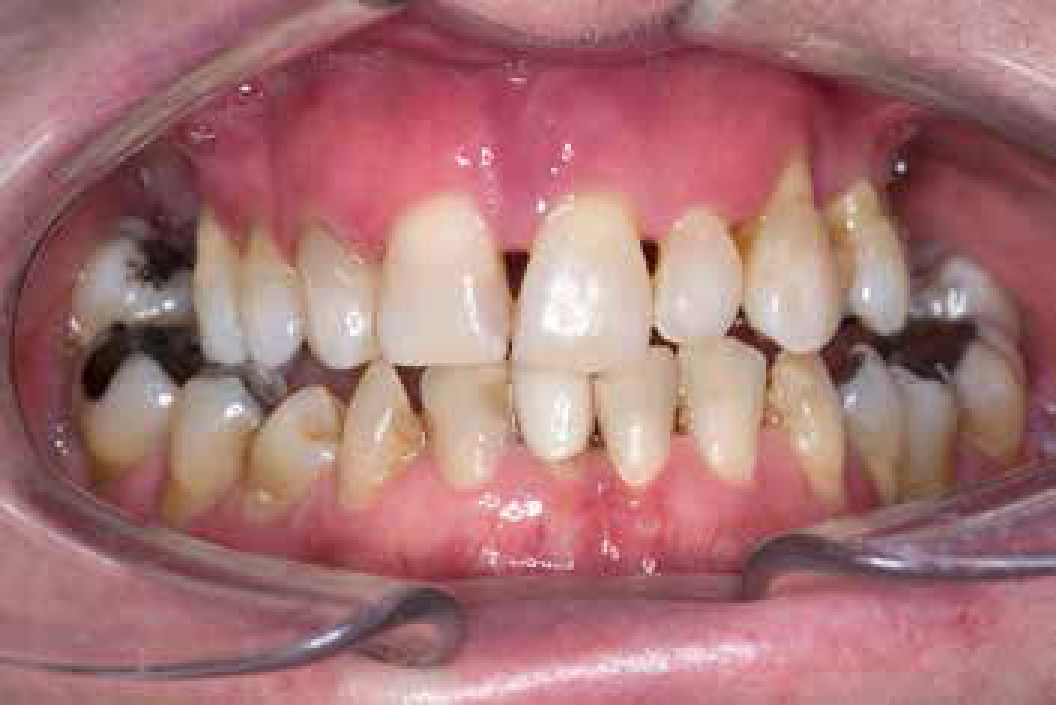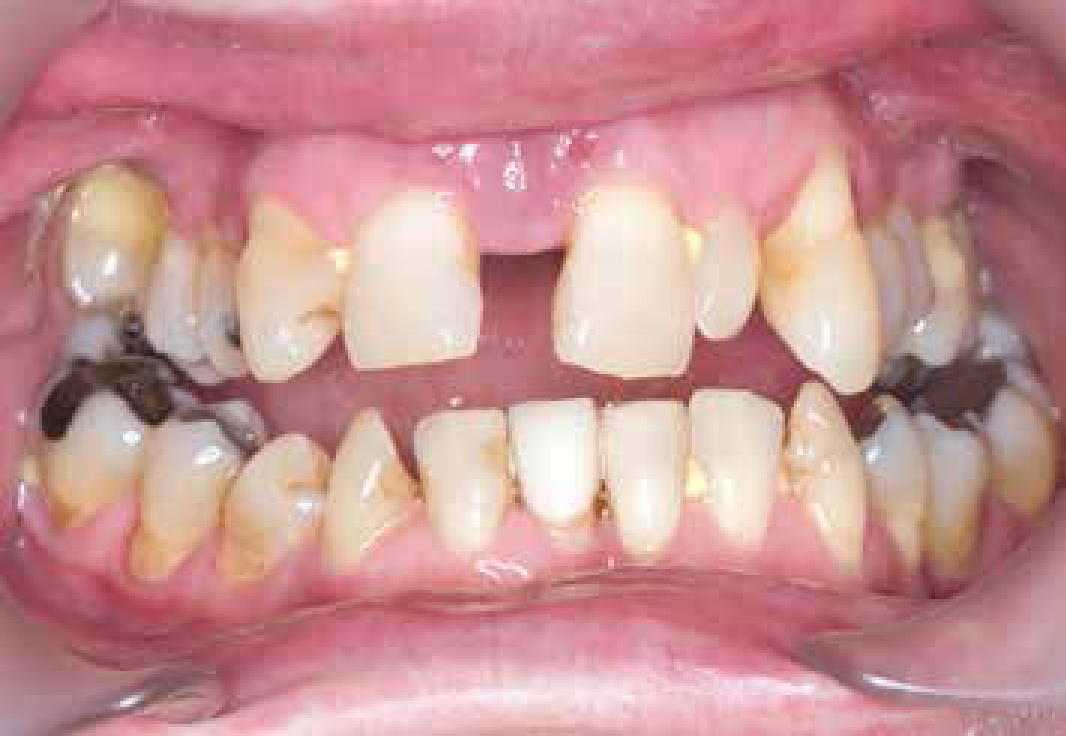Orthodontic mechanics
Once a periodontal patient has a stable periodontium, the orthodontist can embark on orthodontic treatment. However, considering what types of appliances and mechanics to use at the treatment planning stage, and endeavouring to keep the orthodontic treatment as short as possible, will help improve the outcomes for patients. Although this may not always be possible, certain components of a fixed appliance may be altered to help prevent the periodontal condition worsening. Banded teeth have been shown to be associated with greater loss of attachment compared with bonded teeth.24 Therefore, it is recommended that the orthodontist should avoid placement of bands where possible, particularly in periodontal patients.
The orthodontist may also need to consider bracket positioning and favourable mechanics to ensure optimal tooth movement. Loss of alveolar bone causes apical movement of the centre of resistance, therefore teeth are more prone to tipping movements. Periodontal patients with areas of bone loss will provide reduced anchorage to aid orthodontic mechanics. Anchorage reinforcement may be required by incorporating a greater number of teeth in the appliance or by using other methods of anchorage reinforcement, such as temporary anchorage devices. The orthodontist should use lighter forces as this will reduce the anchorage requirements and help limit root resorption. The risk of apical root resorption needs consideration in orthodontic treatment and all patients need to be carefully consented for this. The impact an average amount of root resorption will have on patients with normal roots and a healthy periodontium is likely to be minimal. However, in patients with an already reduced periodontium, shortening of the roots could result in an increase in mobility and, in some cases, hasten the loss of teeth. This could be considered a disappointing outcome for patients who have complied with periodontal treatment and achieved periodontal stability.
As part of an orthodontic patient's treatment the orthodontist may choose to upright a tipped molar tooth or extrude a tooth with a bony defect. By moving a tooth away from the osseous defect, the bony defect can be shallowed out, providing better gingival contour and increased ease of plaque removal.25,-27
Where periodontal disease has occurred, the gingival margin level may be high due to previous bone loss, however, intruding a tooth orthodontically may not improve the gingival margin. Periodontal patients may also be concerned about black triangles which were not visible prior to periodontal treatment. Although these patients may now have a healthy periodontium, having lost the crestal bone between the teeth means the papilla becomes absent, resulting in poor aesthetics with a black triangle visible between the teeth.28 The orthodontist may consider recontouring the surfaces of the adjacent teeth to lengthen the contact point and move it apically towards the interproximal gingivae. This may not eliminate the black triangle but may improve aesthetics.
A patient may attend with a presenting complaint that appears to be gingival in nature, but is a result of orthodontic treatment or occlusal trauma. Patients with a deep and traumatic bite may present with extensive gingival stripping of the tissues, which can be exacerbated by poor oral hygiene. For these patients simple periodontal management will not suffice and the occlusal trauma may need to be eliminated, either with orthodontics alone or with orthognathic treatment. Patients may also present with ulceration or suppuration where an orthodontic appliance, such as a band, is impinging on a periodontal pocket, making it difficult for the patient to clean. It is necessary to ensure that any gingival trauma is limited by correct placement of appliances.
Orthodontic retention also needs to be planned carefully as fixed retainers are often preferred in periodontal patients to removable retainers. Removable retainers exert jiggling forces on teeth as they relapse during the day and are moved back into position at night-time. This has been shown to have an impact on alveolar bone support and mobility of teeth, although not thought to result in loss of attachment unless inflammation is present.29,30 Fixed retainers may be advantageous as they distribute occlusal forces amongst several teeth and jiggling forces are not applied. However, the patient needs to be able to maintain a good level of oral hygiene around the retainer and long-term maintenance is required.




